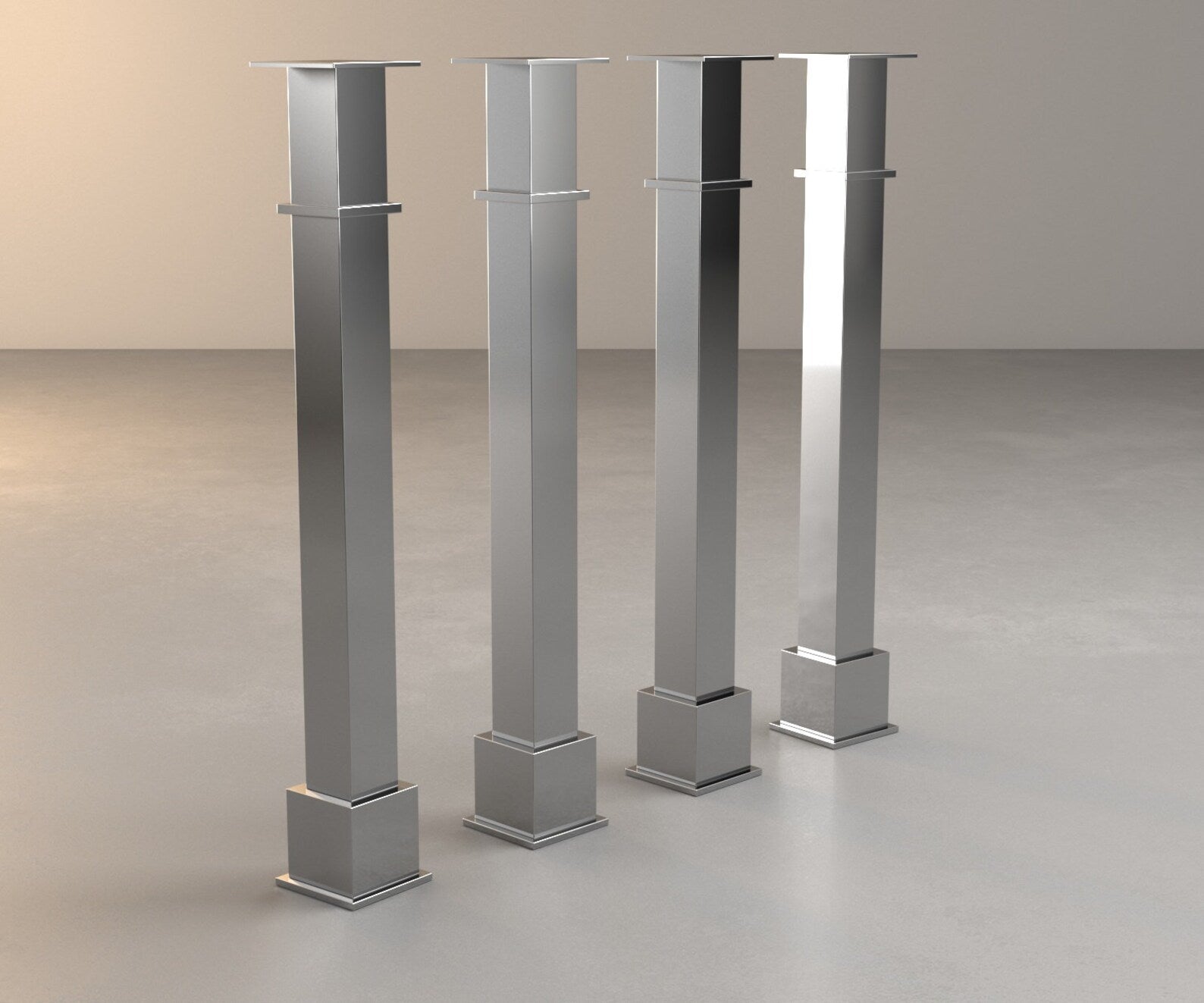An Overview to Selecting the Perfect Legs For Kitchen Area Island for Your Home
Selecting the optimal legs for your kitchen area island is a nuanced choice that influences both the capability and aesthetic allure of this central area. Aspects such as elevation, products, and design play an important function in harmonizing your island with the general kitchen area layout. Furthermore, recognizing the relevance of security and maintenance can significantly influence your option. As you consider these elements, it comes to be evident that the best legs can change not just the appearance of your cooking area however additionally its use for many years ahead. What details attributes should you prioritize in this choice process?

Understanding Kitchen Island Legs
When choosing legs for a kitchen island, it's vital to recognize their aesthetic and practical duties in the overall layout. The legs serve as an important support group, making sure stability and longevity for the island, which usually operates as a workspace, eating area, or gathering place. The selection of material and building strategy must be robust enough to endure everyday usage and possible wear.
In enhancement to their architectural obligations, legs contribute considerably to the island's visual charm. They can boost the cooking area's design, whether via typical, modern, or diverse layouts. The elevation and percentage of the legs are likewise essential considerations; they must harmonize with the island's countertop height while ensuring comfortable seating for those making use of the room.
Moreover, the leg layout can affect the general flow of the kitchen area. Open, airy leg designs can develop a feeling of lightness, while solid, substantial legs might share an extra based and stable aesthetic - Legs For Kitchen Island. Recognizing these aesthetic and functional facets will certainly direct property owners in making informed selections that match their kitchen area's design and boost its functionality
Popular Styles and Materials
The option of legs for a cooking area island includes a variety of preferred styles and materials, each offering one-of-a-kind attributes that can enhance both capability and aesthetics. Amongst the most desired styles are contemporary, rustic, and traditional. Contemporary legs usually feature sleek, minimal designs that highlight simplicity and tidy lines, making them perfect for modern cooking areas. Rustic styles, on the various other hand, accept natural components and frequently display recovered timber or distressed coatings, adding warmth and beauty to the space. Typical legs usually show elaborate information and craftsmanship, improving timeless kitchen designs.
:max_bytes(150000):strip_icc()/pink-marble-tile_House-of-Harvee-9f030193ae38484a9cb7ea2d71af66f4.jpg)
Elevation and Stability Factors To Consider

Security is an additional important consideration. The legs of the cooking area island must offer adequate assistance, making sure that the structure can hold up against everyday use without changing or tottering. Material choice plays a significant duty in stability; steel legs, for circumstances, tend to provide greater stamina compared to timber. Additionally, making certain that the island is securely secured to the floor or wall surface can enhance security, specifically for larger islands that might bear substantial weight.
Matching Your Kitchen Aesthetic
Picking the appropriate legs for your cooking area island goes past capability; it also plays a significant role in the overall aesthetic of the space (Legs For Kitchen Island). When choosing legs, take into consideration the layout style of your cooking area.
Shade is an additional essential factor. Legs that enhance or comparison with your island's surface Continue area and bordering cabinets can produce visual harmony or striking prime focus. For circumstances, coupling dark timber legs with a light marble kitchen counter can include depth and rate of interest. Additionally, consider the coating of the legs; matte, shiny, or textured finishes can significantly influence the total feel of the kitchen.
Installment and Maintenance Tips
Mounting kitchen island legs needs mindful attention to information to ensure both stability and visual appeal. Utilize a stud finder to situate wall studs if you are connecting the legs to a wall surface or using brackets for included assistance.
When securing the legs, make use of top notch screws and, if necessary, timber glue for added stamina. For steel legs, guarantee that you are utilizing ideal anchors and tools to stop damages to your flooring. It is recommended to look for levelness after installment, making adjustments as needed to prevent tottering.
Upkeep is just as important for longevity - Legs For Kitchen Island. Consistently check the legs for try this site any indications of wear or loosening, especially in high-traffic locations. Tidy the legs with an ideal cleaner, staying clear of unpleasant products that might scratch the surface. For wood legs, consider using a timber conditioner occasionally to keep their coating. By adhering to these installment and upkeep pointers, you can make certain that your kitchen island legs remain both aesthetically enticing and practical.
Conclusion
In verdict, selecting the ideal legs for a kitchen area island demands cautious factor to visit site consider of height, security, and aesthetic compatibility. Inevitably, thoughtful leg selection plays a critical role in boosting both the practicality and layout of the kitchen area.
When selecting legs for a kitchen area island, it's essential to comprehend their visual and useful functions in the total design. Open, airy leg designs can develop a sense of agility, while strong, substantial legs might share a more grounded and secure visual. The legs of the kitchen island must provide sufficient assistance, ensuring that the structure can stand up to day-to-day usage without changing or wobbling.Installing kitchen island legs needs cautious interest to detail to guarantee both security and aesthetic appeal.In conclusion, picking the ideal legs for a cooking area island necessitates cautious factor to consider of height, security, and visual compatibility.